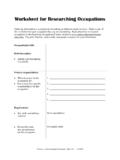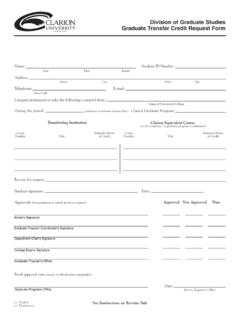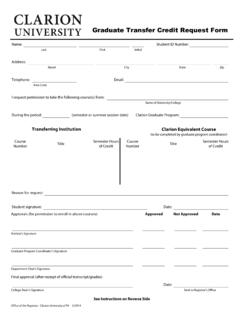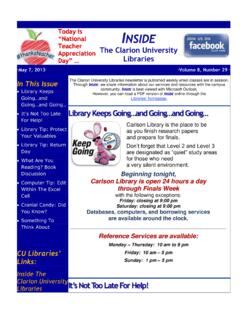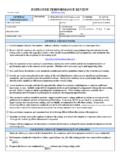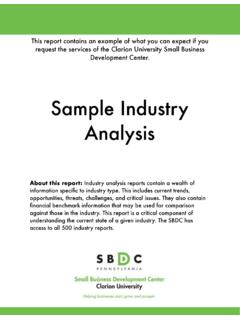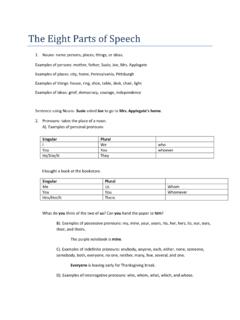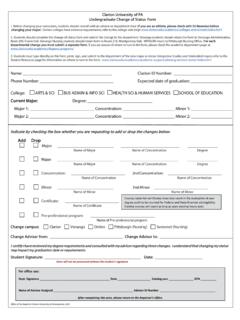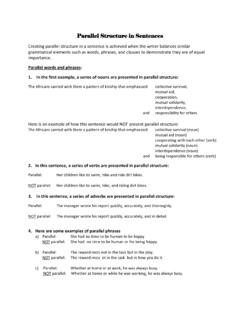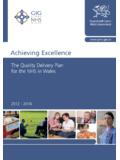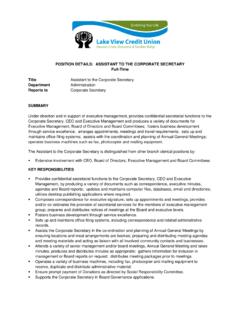Transcription of EMPLOYEE PERFORMANCE REVIEW
1 EMPLOYEE PERFORMANCE REVIEW363L (Rev. 8/2005) EPR Factor Links GENERAL INFORMATION TYPE REPORT PROBATIONARY (CS/NCS union covered) PROBATIONARY (CS non-union covered) INTERIM ANNUAL INTERIM (6 month NCS/NUC/SMS) EMPLOYEE NAME AGENCY EMPLOYEE NUMBER CLASS TITLE SUPERVISOR NON-SUPERVISOR STATUS CIVIL SERVICE NCS SMS ORGANIZATION RATING PERIOD FROM TO SUPERVISOR NAME SUPERVISOR POSITION NUMBER GENERAL INSTRUCTIONS Verify/complete General Information. Indicate whether EMPLOYEE is a supervisor or non-supervisor.
2 REVIEW with the EMPLOYEE the EMPLOYEE s job description, job standards (expectations/objectives/duties) for the rating cycle to ensure the appraisal relates to the specific responsibilities, job assignments, and standards that were conveyed to the EMPLOYEE for the rating cycle. (On-line Position Description Application) Base the appraisal on the EMPLOYEE s PERFORMANCE during the entire REVIEW period, not isolated incidents or PERFORMANCE prior to the current REVIEW period. Obtain/ REVIEW necessary input and supporting data. Rate each factor in relation to the standards established and the guidelines listed on the form for each rating. Provide an overall rating based on the rating of the individual factors, adherence to significant PERFORMANCE standards, and accomplishment of essential functions.
3 Each factor need not be of equal weight but comments should justify significant differences impacting on the overall rating. Assess EMPLOYEE strengths and identify opportunities where the EMPLOYEE could improve or requires additional knowledge or skill. Include projected development needs to meet anticipated assignments during the next rating period. Obtain EMPLOYEE input regarding their training needs. When rating employees, consider their participation and willingness to participate in EMPLOYEE development opportunities. The comments sections should be used to: support PERFORMANCE ratings, indicate problem areas and provide guidance to employees on how to improve PERFORMANCE .
4 Comments MUST be provided for outstanding, needs improvement, and unsatisfactory ratings, and are highly recommended for all other ratings. Supervisor, reviewing officer, and EMPLOYEE comments are to be relevant and job related. (Additional comments for any sections should be placed on Page 5 of this form if completing the form electronically or by attaching additional 8 by 11 paper in similar format.) Discuss/obtain comments and signature/date of reviewing officer before discussion with EMPLOYEE . Sign/date the form, meet with EMPLOYEE to discuss the rating, and obtain the EMPLOYEE s signature/date/comments. Arrange for reviewing officer discussion if requested.
5 Update with the EMPLOYEE job description, essential job functions, and PERFORMANCE standards/objectives for the next rating cycle. COMMUNICATION OF PERFORMANCE STANDARDS Indicate when you conveyed job standards to the EMPLOYEE and when progress REVIEW (s) was conducted: 1. PERFORMANCE standards (objectives, duties, expectations, etc.) for this rating period were conveyed to EMPLOYEE on . date(s) 2. Progress REVIEW (s) was conducted on (at least one during rating cycle) date(s) EMPLOYEE NAME: EMPLOYEE NUMBER: JOB FACTORS 1. JOB KNOWLEDGE/SKILLS Measures EMPLOYEE s demonstrated job relevant knowledge and essential skills, such as work practices, policies, procedures, resources, laws, customer service, and technical information, as well as the relationship of work to the organization s mission.
6 Also measured are the EMPLOYEE s self-improvement efforts to enhance skills and knowledge and to stay current with changes impacting the job. OUTSTANDING COMMENDABLE SATISFACTORY NEEDS IMPROVEMENT UNSATISFACTORY Possesses superior job skills and knowledge; effectively applies them to work assignments. Willingly mentors staff; shares knowledge. Seeks/applies innovative and relevant techniques. Work reflects thorough and current knowledge/ skill of job and impact on agency activities/related resources. Uses opportunities to expand knowledge/skills, sharing information with staff. Work reflects adequate knowledge/skills for job. Has some knowledge of related work.
7 Stays current with major changes impacting on knowledge or skill. Accepts change. Often demonstrates a lack of basic or sufficient job knowledge/skills to perform routine functions of the job. Occasionally is resistant to changing knowledge and/or skill requirements or processes, including opportunities for knowledge/skill enhancement. Consistently demonstrates a lack of basic job knowledge and/or skills to perform job. Rarely takes advantage of available skill enhancement or training opportunities. Often is resistant to changing requirements. Comments: 2. WORK RESULTS Measures EMPLOYEE s results in meeting established objectives/expectations/standards of quality, quantity, customer service, and timeliness both individually and in a team.
8 OUTSTANDING COMMENDABLE SATISFACTORY NEEDS IMPROVEMENT UNSATISFACTORY Work consistently exceeds expectations of quality, quantity, customer service, and timeliness. Work frequently exceeds expected quality, quantity, customer service, and timeliness standards. Work usually meets expectations of quality, quantity, customer service, and timeliness. Often has difficulty meeting expected quality, quantity, customer service, and/or timeliness standards. Consistently fails to meet expected quality, quantity, customer service, and/or timeliness standards. Comments: 3. COMMUNICATIONS Measures EMPLOYEE s PERFORMANCE in exchanging information with others in an effective, timely, clear, concise, logical, and organized manner.
9 Communications include listening, speaking, writing, presenting, and sharing of information. Consideration is given to client/data complexity/sensitivity. OUTSTANDING COMMENDABLE SATISFACTORY NEEDS IMPROVEMENT UNSATISFACTORY Consistently communicates in clear, effective, timely, concise, and organized manner. Is articulate and persuasive in presenting, soliciting complex or sensitive data. Frequently communicates in an effective, timely, clear, concise, and organized manner. Proficiently organizes and presents difficult facts and ideas orally and in writing. Seeks/provides feedback. Usually communicates effectively and exchanges relevant information in a timely manner.
10 Speaks and writes clearly. Keeps others informed. Listens with understanding. Often fails to communicate effectively or in a timely manner. Lacks clarity of expression orally or in writing. Is inconsistent in keeping others informed. At times, fails to listen effectively. Consistently fails to communicate effectively or timely. Often does not keep others informed. Is an ineffective listener and/or frequently interrupts. Comments: 4. INITIATIVE/PROBLEM SOLVING Measures the extent to which the EMPLOYEE is self-directed, resourceful, and creative in performing job duties individually or in a team. Also measures EMPLOYEE s PERFORMANCE in identifying and resolving problems; following through on assignments; and initiating or modifying ideas, methods, or procedures to provide improved customer service, redesign business processes, and accomplish duties.
